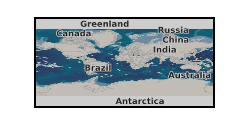Orogeny
Type of resources
Topics
Keywords
Contact for the resource
Provided by
Years
Formats
Update frequencies
-

Thermochronological data from IODP Bengal Fan site 354. Grant abstract: The Himalayas are a type example of continent-continent collision, and resultant mountain building processes. Geologists can look at the rocks in the mountain belt itself to determine its evolution, but sometimes the evidence in the rocks in the mountain belt itself is obscured by later increases in the temperature and pressure that the rocks were subjected to, which overprints the evidence. Sediments eroded off the evolving Himalaya are deposited in the Bengal Fan, and these can provide an archive of the erosion of the history of the mountain belt through time which has not been obscured my later metamorphism, as the material was eroded and removed from the mountain belt prior to these later overprinting events. This project will analyse minerals that cooled as they were exhumed from deoth towards the surface in the mountain belt. The project will date the minerals to determine the time they cooled, and this will provide information on when the rocks were exhumed and how fast they exhumed, thus providing information on when and how fast the mountain belt grew.
-

4 tables, and accompanying references, from paper entitled ‘Increased biomass and carbon burial 2 billion years ago triggered mountain building’. Tables record orogen depositional ages, deformation ages, Total Organic Carbon contents and organic carbon isotope compositions, for 20 orogens of Palaeoproterozoic age.
 BGS Data Catalogue
BGS Data Catalogue